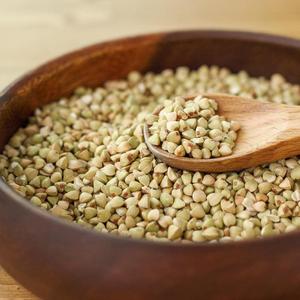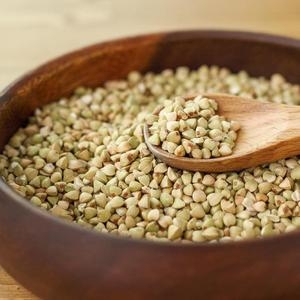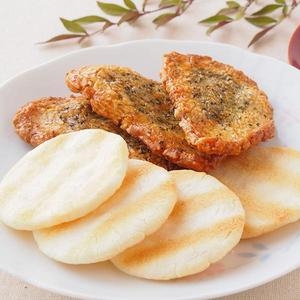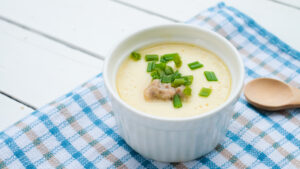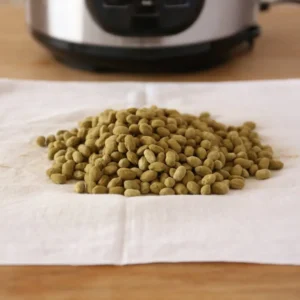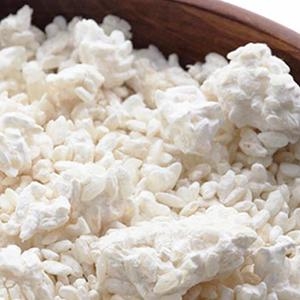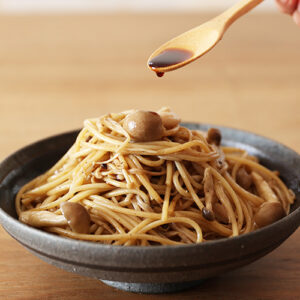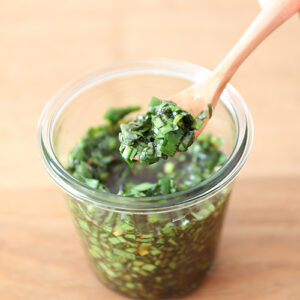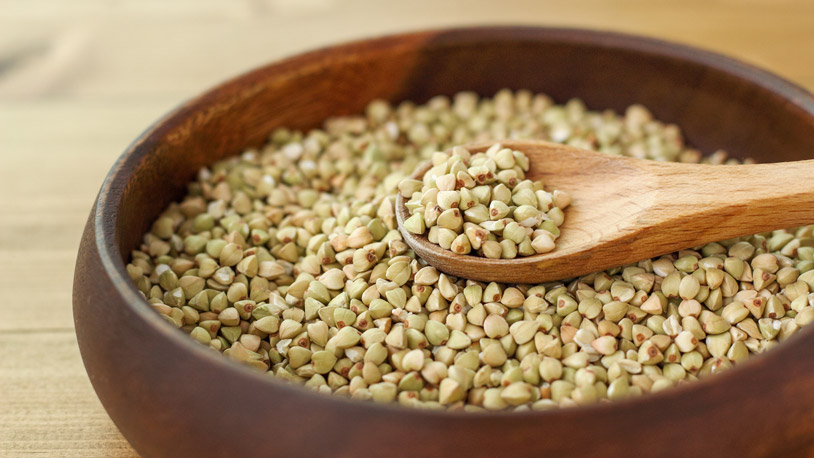
Have you tried to eat buckwheat?
Buckwheat is widely used healthy food in some countries, and its existence is known worldwide. The gluten-free food that is rich in minerals, proteins, dietary fiber, vitamins, and antioxidant compounds. You can cook and eat buckwheat with so many delicious recipes.
Buckwheat has so many charms, and we are about to tell you why this food should be incorporated into your healthy diet.
What is Buckwheat?
Buckwheat is a plant cultivated for its pyramid shaped grain-like seeds and uses for many culinary purposes. It is classified as pseudocereals, a seed that is used like cereal grains but doesn’t grow on grasses. Another example of pseudocereals are quinoa and amaranth.
Buckwheat is used as a tea or processed into groats, flour, noodles, and alcoholic beverages.
Buckwheat have so many rich nutrients inside. You can find the detailed information about buckwheat’s nutrition facts and health benefits later in this article.
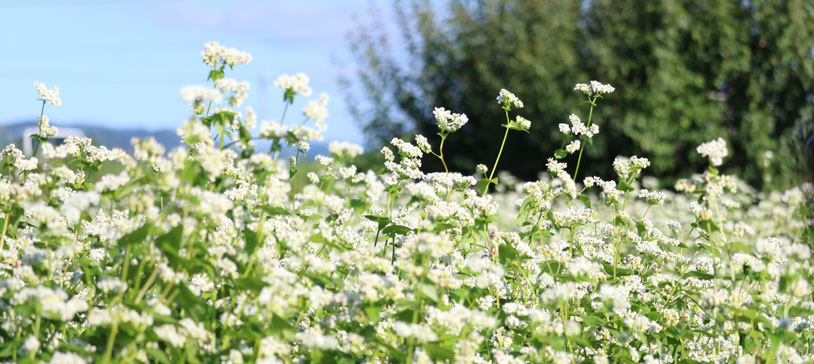
Buckwheat plant with its flower
The plant is originated from Southeast Asia, but now it becomes a very common staple food in some countries and known worldwide.
Buckwheat has been widely used for many dishes all over the world. For example, in Japan, buckwheat is popular to make Soba (buckwheat noodle) dishes. In South Korea, buckwheat is known as the ingredient to make memilmuk (buckwheat jelly) and guksu (Korean noodle). Buckwheat flour is also used to make Indian dishes such as paratha, chapati, and pakora.
In Europe and North America, buckwheat is used to make buckwheat porridges and soups. The buckwheat flour is usually prepared for pancakes, waffles, pies, biscuits, etc.
Fagopyrum esculentum (common buckwheat) is the most used ordinary type of buckwheat, covering approximately 90% of the total world production of buckwheat. Followed by Fagopyrum tataricum (bitter buckwheat/tartary buckwheat) that mainly grows in mountainous regions.
We will compare the general composition of common buckwheat and tartary buckwheat later here.
What does buckwheat taste like?
Buckwheat has a nutty taste with a little bit of bitterness.
The buckwheat groats can be eaten raw or toasted, and the raw one will have a milder taste than the toasted groats.
Buckwheat flour is the most used buckwheat processed product. When using buckwheat flour, it will give a nutty, grainy flavor into your dish. Because it has high fiber content, it may be a bit drier, but still got a chewy texture.
Please note to always follow the specific recipe calls for buckwheat flour to get the right texture.
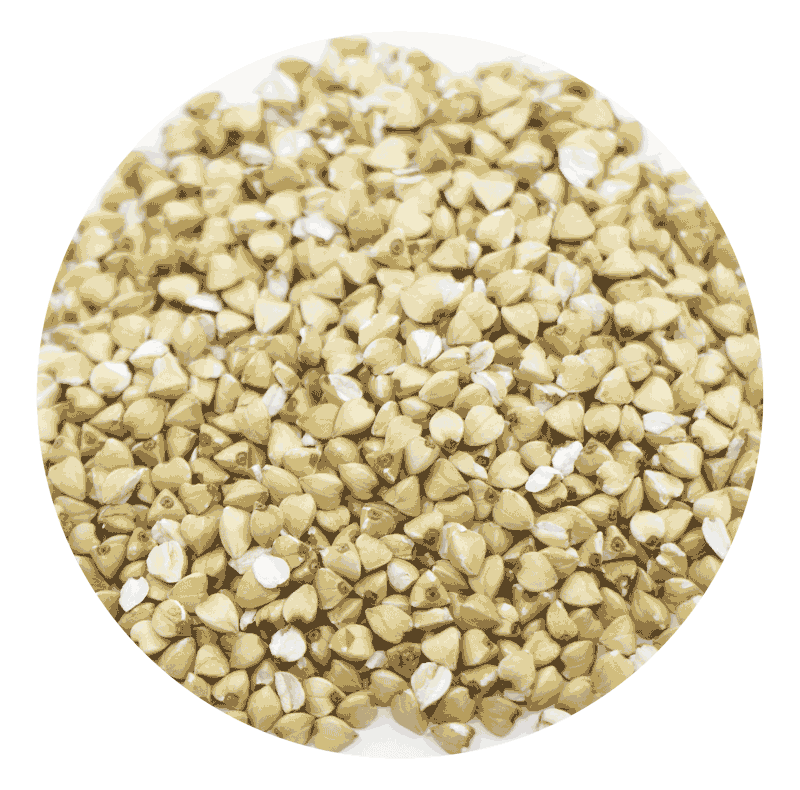
Is Buckwheat Gluten-Free?
Despite its name and its form that looks like a grain, buckwheat does not contain gluten. The reason is that buckwheat is taxonomically not related to wheat, and it is not a grain but a seed.
Because it is gluten-free, buckwheat is safe to consume for those with coeliac disease and people that are intolerant to wheat flour.
Moreover, buckwheat is a nutritious food filled with healthy compounds. It is also easy to buy since you can find it in the nearest grocery store or the convenient online stores.
In case you are buying buckwheat processed products, please be sure to check their composition and product label. Not all buckwheat processed product is 100% gluten-free since the product can be mixed with other gluten ingredients.
Buckwheat Nutrition Facts
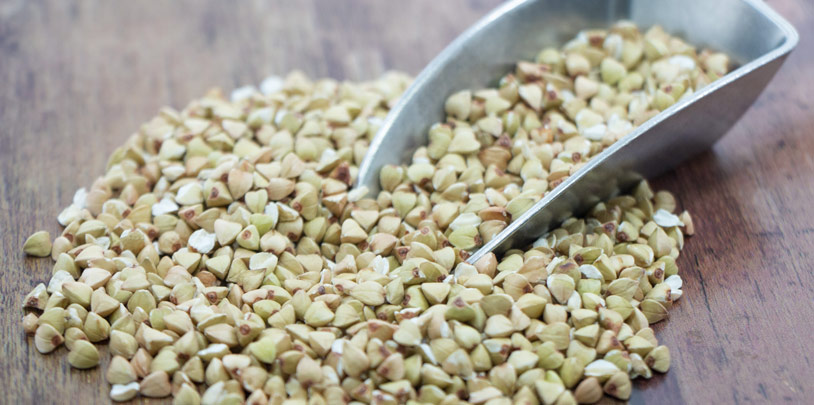
Buckwheat is a healthy food with rich nutrients inside.
Nutritional components of the buckwheat will differ according to the buckwheat’s type, cultivation area, and climate conditions when it is cultivated. But it is characterized to contain many nutritious components such as the essential polyunsaturated fatty acids, minerals, proteins, dietary fiber, and several vitamins (B, C, and E).
As the grain alternative, buckwheat contains plenty of carbs for you. Every buckwheat contains more than 50% carbohydrate in the form of starch and more than 1% soluble carbs. Moreover, buckwheat is low in sugar and high in fiber with a low to medium glycemic index (GI).
Buckwheat also have an abundant antioxidant compounds. Study proofed that buckwheat have the greatest amount of antioxidants than other cereals such as barley, oats, and rye.
Source:
CHARACTERISTICS OF BUCKWHEAT AND BUCKWHEAT FLOUR
Let’s compare the general composition of Common Buckwheat and Tartary Buckwheat groats:
| Compounds | Common Buckwheat Groats | Tartary Buckwheat Groats |
|---|---|---|
| Starch | 54.50% | 57.40% |
| Soluble Carbohydrates | 1.60% | 1.78% |
| Dietary Fiber | 7.0% | 10.60% |
| Protein | 12.30% | 13.16% |
| Lipid | 3.80% | 3.84% |
| Ash | 2.0% | 2.70% |
| Other compounds | 18.40% | 10.53% |
Source:
Buckwheat: A Useful Food and Its Effects on Human Health
Similar to other foods, less processed buckwheat has more abundant nutrients. So it is advised to eat the buckwheat groats to get buckwheat’s full nutrients.
Buckwheat Health Benefits
“Are there any potential health benefits when consuming buckwheat?”
We compiled some of the potential buckwheat’s health benefits, which may help you to be more certain about this food’s charm!
Health Benefit 1 Good Solution for People with Celiac Disease
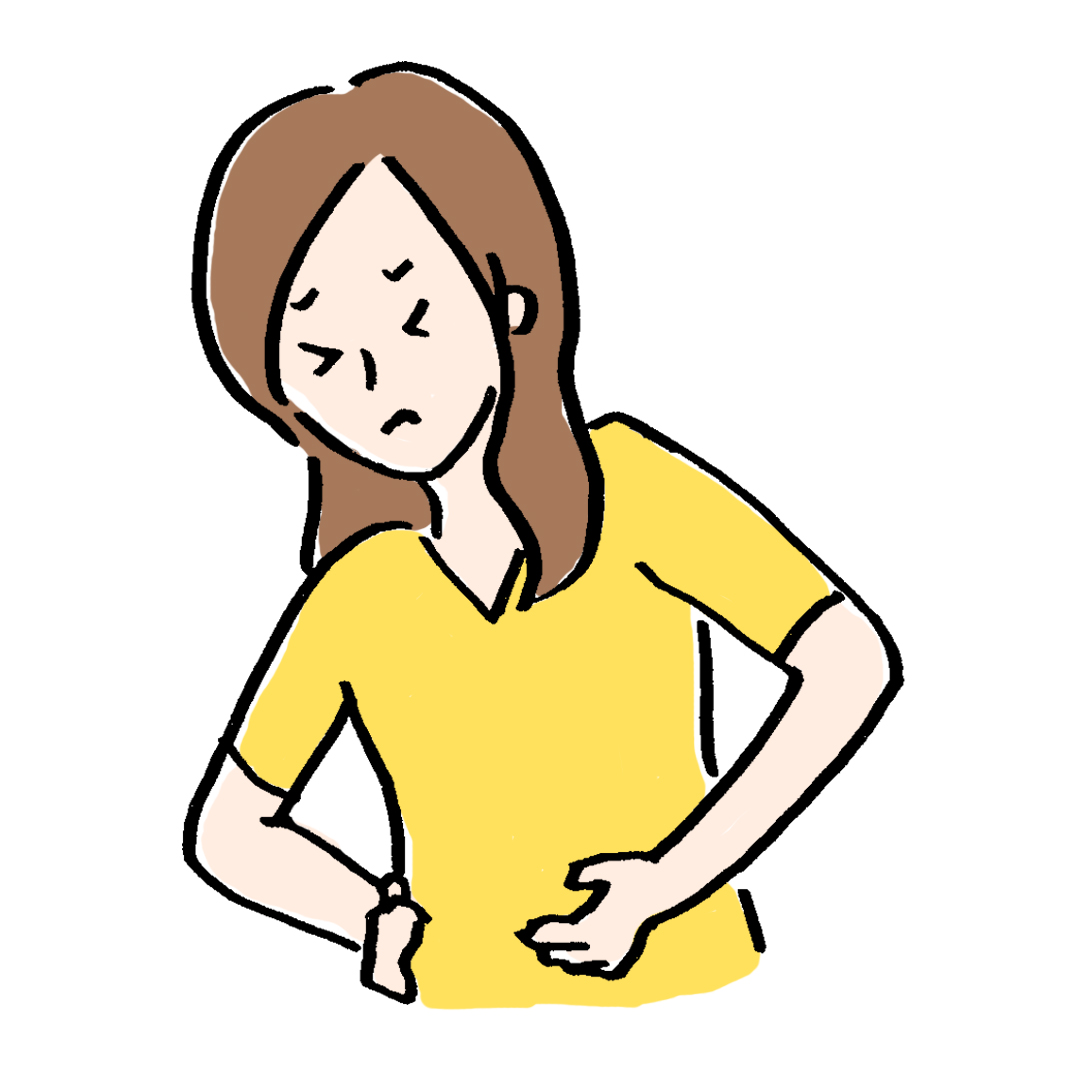
Celiac disease is an immune disease that prevents people to not eat food containing gluten. People with celiac disease will show an immune reaction by damaging their small intestine when eating gluten.
The symptoms could vary from diarrhea, bloating, gas, fatigue, etc.
Buckwheat is a gluten-free food which is very helpful for people with celiac disease.
Buckwheat often used to make gluten-free products such as buckwheat flour, buckwheat cereals, etc. However, if you are looking for the 100% gluten-free product please make sure to check the product label and its ingredients.
The buckwheat alone does not guarantee that the food is 100% gluten-free, because some products may mix it with other ingredients.
Health Benefit 2 Help to Control a Healthy Blood Sugar Level

Consuming more grains and pseudocereals is always a good choice when you want to control a healthy blood sugar level, leading to good health.
The high blood sugar level over a long period of time could trigger a serious disease like type 2 diabetes.
Buckwheat is a food with a low to medium glycemic index (GI). The food with a low GI index not only slower to digest in your body but also make the rise of blood sugar level slower.
Because the carb content is absorbed slowly in the bloodstream, this food makes you full longer. Eating buckwheat may be a good way to start your busy day!
Source:
Glycemic Index and Diabetes
Hence, buckwheat (especially the buckwheat groats) is a good carb choice for people with type 2 diabetes and for you who wants to control a healthy blood sugar level.
Health Benefit 3 Reduce the Risk of Heart Diseases

It is said that buckwheat has the highest antioxidant capacity compared to other cereals (especially the Tartary buckwheat).
The high polyphenol content in buckwheat said to have a significant antihypertensive effect that is to prevent hypertension (high blood pressure). According to a study, the consumption of buckwheat showed to lower the blood pressure on rats.
The dominant polyphenolic compound in buckwheat: rutin, also said to have cardioprotective effects in cardiac hypertrophy and cardiac remodeling, a certain condition change in your heart. If not treated properly, these conditions may lead to heart failure and even strokes.
Rutin may prevent the risk of heart disease by preventing the formation of blood clots, reducing inflammation, and oxidative stress.
Source:
Roles of rutin in cardiac remodeling
Rutin can be found in several foods such as buckwheat, making rutin as an affordable drug alternative.
Health Benefit 4 Therapeutic Food against Alzheimer Disease

Buckwheat is said to be the therapeutic food due to its antioxidant activity.
A research proved that oral administration of the methanol extracts of tartary buckwheat and common buckwheat could improve cognition and memory function on rats. This protective activity to cognition and memory function is exerted from the rutin compound in buckwheat.
In addition, tartary buckwheat showed a stronger protective activity than the Common buckwheat.
From this study, buckwheat has the potential to be therapeutic agents against Alzheimer’s disease.
Health Benefit 5 Help to Maintain a Healthy Body Weight

As mentioned above, buckwheat has a low glycemic index that could help you to feel full longer.
This makes buckwheat could make a good companion for a healthy diet. Especially when you want to promote weight loss or just control healthy body weight.
The dietary fiber in buckwheat also plays a role in maintaining a healthy body weight. That is why some diet program also recommends using buckwheat in the diet menu. However, researchers will need to do further research in examining the effects of buckwheat on weight loss.
Apart from that, buckwheat still contains many good compounds that will be beneficial for our health.
Buckwheat Allergy
Consuming buckwheat should not cause side effects in most people.
But it is possible that consuming buckwheat could cause buckwheat allergy. Cases of buckwheat allergy have been found in Asia and fewer cases from Europe and North America.
People with buckwheat allergy could show symptoms including asthma, rhinitis, gastrointestinal disturbance, urticaria/hives, angioedema, and anaphylaxis after consuming or inhaling buckwheat.
Source:
Buckwheat allergy: a potential problem in 21st century Britain
Make a clear awareness about buckwheat allergy is very important before consuming it. If you are trying buckwheat for the first time and happen to experience the symptoms above, please consult to your physician immediately.
How to Cook Buckwheat?
Buckwheat can be cooked and enjoyed in many ways.
For those who want to try buckwheat for the first time, we have some buckwheat cooking method recommendations below. These methods are all delicious and easy to make. Please try it by all means!
Cook Buckwheat Groats Using Rice Cooker
You can either use raw buckwheat groats or toasted buckwheat groats for this cooking method. Raw buckwheat groats will get you a milder taste, while toasted buckwheat groats (kasha) will give a stronger, and slight burnt taste. Please make it according to your preference!
To make the 3 servings for this, please prepare 208g of buckwheat groats, 420ml filtered water, ½ teaspoon salt, and 2 tablespoons salted butter/unsalted butter. Mix all the ingredients in the rice cooker and start cooking in the white rice cooking method.
Enjoy the savory and chewy cooked buckwheat while warm. You can use this as rice replacement and eat it alongside with other side dishes.
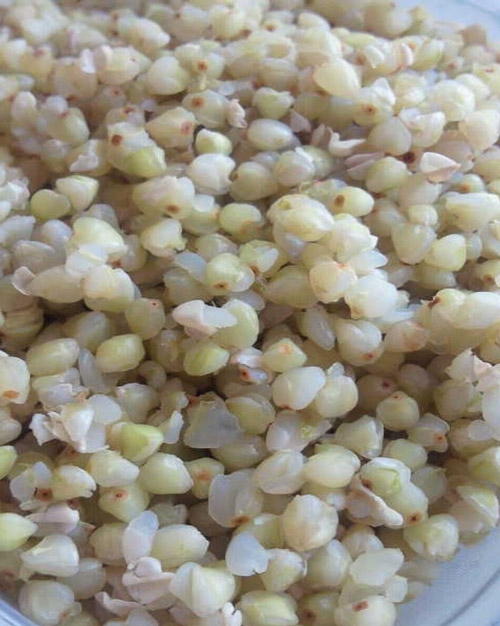
Toasted Buckwheat Groats
Did you know that toasted buckwheat groats is delicious as snacks?
Yes! With a few simple steps, you can transform the raw buckwheat groats into a snack that has a texture like toasted nuts. This snack can be the replacement for nut because buckwheat contains more nutritious compounds inside.
Just heat a large skillet without adding oil or butter into it, and place some raw buckwheat groats to the skillet. Stir the buckwheat evenly using spatula for around 4 to 5 minutes, or until the groats are toasted perfectly but not burned.
If completed, store the toasted buckwheat groats in your favorite airtight container and enjoy anytime! It’s perfect for movie time or when working in front of your computer.
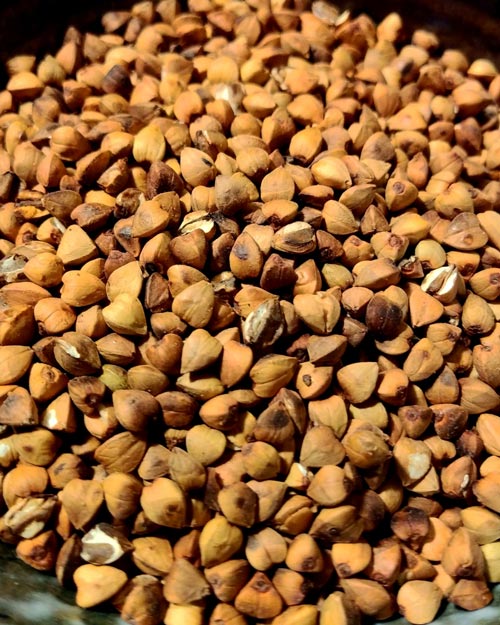
Mix Buckwheat Groats with White Rice
Buckwheat is delicious to cook together with white rice using a rice cooker. This is a combination that suitable for many side dishes with a taste that you will never get tired of.
To make this, prepare 300g of rinsed white rice, 3 tablespoons of rinsed buckwheat groats, ½ teaspoon of salt, and 375ml water (or the water required to cook 300g white rice).
Mix all the ingredients in a rice cooker and cook in the normal (white rice cooking) mode. Once cooked, mix evenly and serve immediately.
The cooked rice will be about 600g, or about 2.3 times more than before cooking. This number is suitable for family dinner. Let’s try it by all means!
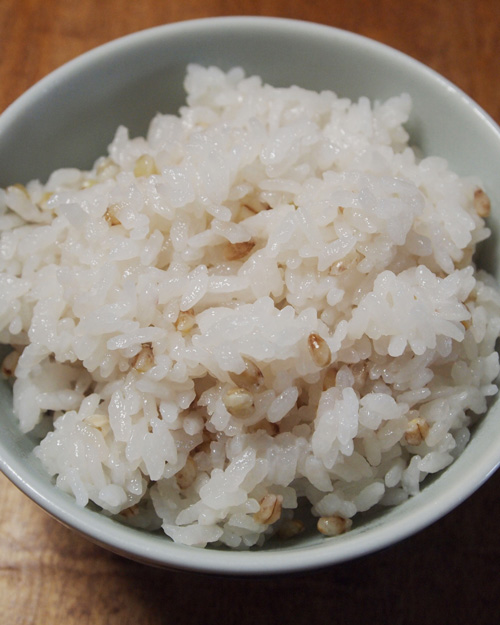
Delicious Buckwheat Recipes for Everyday Meal
Buckwheat has become a staple food in many countries, so there are many ways to eat buckwheat. In this article, we will introduce few delicious recipes using buckwheat.
1. Breakfast Buckwheat Porridge
2. Buckwheat Pancake
3. Tsukimi Soba
4.Buckwheat and Chia Seeds Bread
Breakfast Buckwheat Porridge Recipe
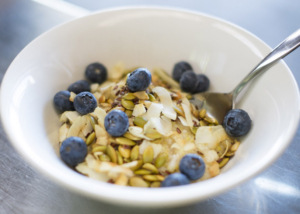
Breakfast Buckwheat Porridge
Ingredients
- 208 g Raw buckwheat groats, rinsed
- 480 ml Water
For Toppings
- 80 g Blueberries
- 2 tablespoons Pumpkin seeds
- 2 tablespoons Sliced coconuts
- 2 tablespoons Honey
Instructions
- Place buckwheat groats and water into a small pot in medium-high heat. Bring it to a boil and reduce to a simmer. Close the lid, change it to low heat, and let it simmer for 10 minutes.
- Turn off the heat and let it steam for another 5 minutes. Please keep the lid close at this moment. (You can use this time to prepare the toppings)
- Stir the buckwheat porridge gently and serve it in a bowl. Top with blueberries, pumpkin seeds, and sliced coconuts (or another topping in your preference). Enjoy!
Notes
Buckwheat Pancake Recipe
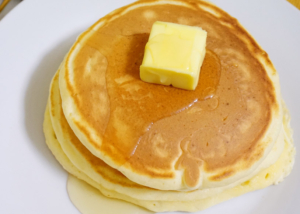
Buckwheat Pancake
Ingredients
Instructions
- Beat the egg and sugar in a bowl, add milk and mix together.You can use milk, low fat milk, soy milk, or buttermilk (in your preference).
- Mix buckwheat flour, salt, and baking powder in a strainer. Sift the mixture in the beaten egg mixture.
- Whisk the mixture well.
- Preheat the skillet in a medium to low heat and spread it with ½ Tbsp of butter. The pancake batter should make 8 pancakes, so spoon the batter into the heated skillet of about ¼ cup.
- Cook for about 2 to 3 minutes or until it forms small bubbles on the surface. After that, flip to the opposite side and cook for another 1 to 2 minutes or until golden brown.
- Set the cooked pancake aside with a spatula and repeat the process with the remaining batter. Add more batter when needed.
- Serve the cooked pancakes immediately. Every serving will have 2 pancakes. Top with butter and maple syrup (or any toppings in your preference).
Tsukimi Soba Recipe
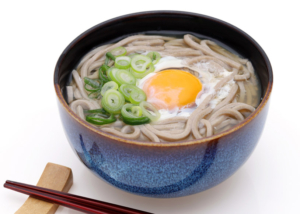
Tsukimi Soba
Ingredients
- 400 g Buckwheat noodle (soba noodle) for 4 servings
- 1440 ml Dashi soup
- 80 ml Soy sauce (shoyu)
- 2 tablespoons Mirin
- ½ teaspoons Salt
- 4 Pasteurized fresh eggs
- 2 tablespoons Green onion, sliced
Instructions
- Prepare the soup: Heat the dashi soup, shoyu, mirin, and salt in a pot to make the soup/broth.
- Prepare the egg For those who can’t eat raw food, let’s prepare the egg first. Pour 120 g of water into a skillet, at set the heat in medium heat. Beat an egg over the water, and close the lid for 4 to 5 minutes. Drain the egg and save for later.
- Cook the noodleCook and boil the buckwheat noodle in another pot. Follow the instruction for boiling in the product package.
- Drain the cooked buckwheat noodle, and serve evenly in four bowls.
- Pour the hot soup over the noodles.
- For the raw egg version, crack an egg on top of the noodles in each bowl. For the boiled egg version, set the boiled egg on top of the noodles.
- Sprinkle the sliced green onion on top of the noodles in each bowl. Enjoy!
Buckwheat and Chia Seeds Bread Recipe
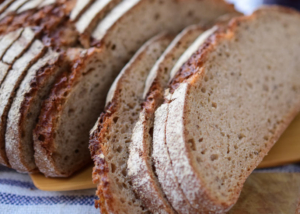
Buckwheat and Chia Seeds Bread
Ingredients
- 300 g Buckwheat flour
- 1½ teaspoons Salt
- 12 g Baking powder
- 40 g Chia seeds
- 240 ml Water for chia seeds
- 160 ml Water for bread mixture
- 60 ml Cooking oil
Instructions
- Mix the chia seeds with 240 g of water. Set aside for 20 minutes or until the seeds have a jelly-like texture.
- Whisk together the buckwheat flour, salt, and baking powder in a bowl. Add the 160 ml water, cooking oil, and jelly-like texture chia seeds into the mixture. Mix until combined but don’t overmix the mixture as it will affect the bread texture later.
- Preheat your oven to 180 degrees Celcius.
- Grease a small 8-inch loaf pan and line it with a parchment paper, make sure there are no sides uncovered.
- Put the bread mixture to the loaf pan, and spoon it evenly. Bake for about 1 hour and 10 minutes or until the poked skewer come out clean.
- Remove the loaf pan from the oven and cool. Then use the parchment paper to lift the bread.
- Slice and serve in a plate. You can store it in the refrigerator for 1 week.
Where to Buy & Store Buckwheat?
Where to buy buckwheat?
Buckwheat products are available in many variations. You can buy it at the nearest grocery store or supermarket. Buckwheat products also easy to find in online shops, which is more convenient if you could not find it near you.
Here are the buckwheat products you could find:
-
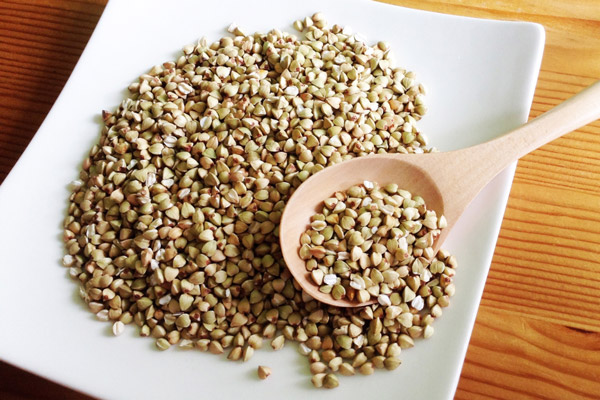
Buckwheat Groats
Buckwheat groats is the hulled seeds of the buckwheat plant. Can be enjoyed raw or toasted. Combine it with many recipes such as porridge, salads, risotto, etc.
-
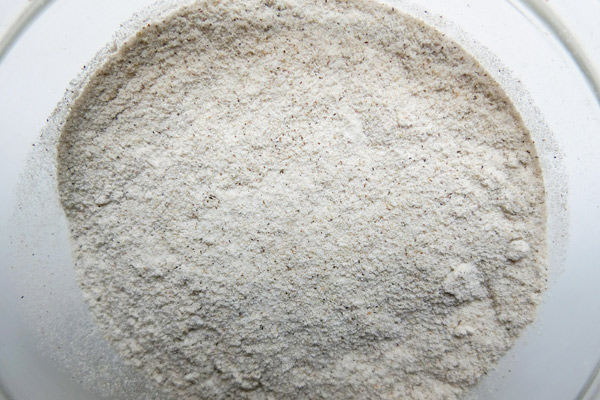
Buckwheat Flour
Buckwheat flour can be used as the replacement for all-purpose flour. It is gluten-free and high in fiber with the rich, nutty, with a distant bitterness flavor.
-
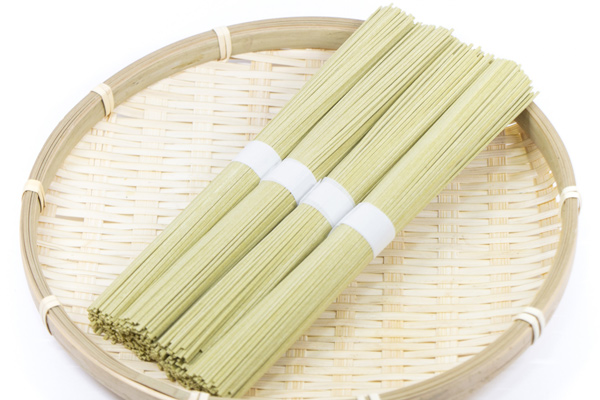
Buckwheat Noodle
Buckwheat noodle is often used in Japanese buckwheat (soba) noodle dish, such as Zaru Soba (cold soba noodle), Tsukimi Soba, Tempura Soba, etc.
-
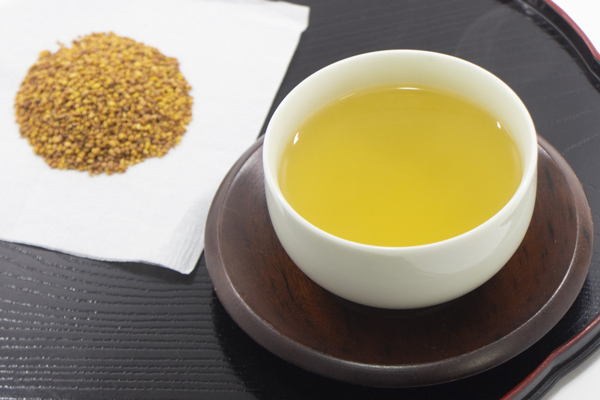
Buckwheat Tea (Sobacha)
Buckwheat tea is caffeine-free tea, with a nutty, toasty taste of the toasted buckwheat. Can be enjoyed cold and hot anytime of the year.
Buckwheat groats can be found in the rice & beans aisle of the supermarket. While buckwheat flour and buckwheat noodles are usually found in the flour & noodle aisle. Buckwheat tea is not that common in all supermarkets, but you can try to find it in the tea aisle.
Where to Store Buckwheat?
The buckwheat groats can be stored in the kitchen pantry for 2 months and in the freezer for up to 4 months. While the buckwheat flour can be stored in the kitchen pantry for 1 month and in the freezer for up to 2 months.
Cooked buckwheat groats could last for three to four days in the refrigerator.
Please make sure to pack the buckwheat in an air-tight container so it won’t be easily degraded. Like other grains, moisture, air, and heat could fasten their degradation.
Buckwheat Q & A
- What is buckwheat?
- Buckwheat is a plant cultivated for its grain-like seeds and considered as a healthy food because of its nutritious content. It is a gluten-free food that is rich in minerals, proteins, dietary fiber, vitamins, and antioxidant compounds.
Buckwheat is classified as pseudocereals, a seed that is used like cereal grains but don’t grow on grasses.
- What does buckwheat taste like?
- Buckwheat has a nutty taste with a little bit of bitterness. For those who taste buckwheat for the first time, it might have a rich, intense taste.
- Is buckwheat gluten free?
- Yes, it is a gluten free food. Buckwheat is very helpful for people with coeliac disease and people that are intolerant to wheat flour.
- How many carbs in buckwheat?
- The carbohydrate in 1 cup (170 g) of cooked, plain buckwheat groats is 33.8 g. This number could differ according to the types of buckwheat.
- What are the benefits of eating buckwheat?
- – Good Solution for People with Celiac Disease
– Help to Control a Healthy Blood Sugar Level
– Reduce the Risk of Heart Diseases
– Therapeutic Food against Alzheimer Disease
– Help to Maintain a Healthy Body Weight
- What are the possible symptoms of buckwheat allergy?
- The symptoms of buckwheat allergy could vary from asthma, rhinitis, gastrointestinal disturbance, urticaria/hives, angioedema, and anaphylaxis after consuming or inhaling buckwheat.
- Is buckwheat healthier than rice?
- From its nutritional values, buckwheat is relatively healthier than rice. Some of its reasons are:
– Buckwheat contain more fibers, carbs, minerals, and proteins.
– Buckwheat has a low to medium glycemic index (GI). Meanwhile rice has medium GI, and some rice (like sushi rice, glutinous rice, sticky rice, etc) has a high GI index.
– Both buckwheat and rice are gluten-free. However, rice contains some sugar, while buckwheat has very low sugar or even sugar-free.
– The two have equal amounts of vitamin, sodium, and cholesterol.
- How do you cook buckwheat?
- Buckwheat can be cooked and enjoyed in many ways.
First, you can easily cook the raw buckwheat groats or toasted buckwheat groats using a pan or rice cooker. Buckwheat groats are also delicious to cook together with white rice. While toasted buckwheat groats can be enjoyed as it is for a light snack.
- Can you eat buckwheat raw?
- Yes, the buckwheat groats can be eaten raw. The raw buckwheat groats are usually used to make the overnight buckwheat groats for breakfast. Be sure to rinse the buckwheat groats with clean water before use.
However, I can say that buckwheat groats are more delicious to eat cooked and seasoned. Try to cook your buckwheat groats into buckwheat groats salad, buckwheat groats stir fry, toasted buckwheat groats (kasha), buckwheat porridge, etc.
- How much buckwheat should I eat per day?
- Like other food, buckwheat is good to consume moderately.
It is safe to eat buckwheat every day, but let’s eat 100 g of buckwheat per day to get its maximum benefits.
- Where to buy buckwheat products?
- Buckwheat products can be find in the nearest grocery store or supermarkets. You can also try to look for it in online shops. Here’s the place to find the buckwheat products in supermarket:
– Buckwheat groats can be found in the rice & beans aisle of the supermarket.
– Buckwheat flour and buckwheat noodle usually found in the flour & noodle aisle.
– Buckwheat tea is not that common in all supermarkets, but you can try to find it in the tea aisle.
- Where to store buckwheat?
- Store these buckwheat products in an airtight container for:
Buckwheat groats ………………… 2 months (pantry), 4 months (freezer)
Buckwheat flour …………………… 1 month (pantry), 2 months (freezer)
Cooked buckwheat ………………… 3 to 4 days (refrigerator)

